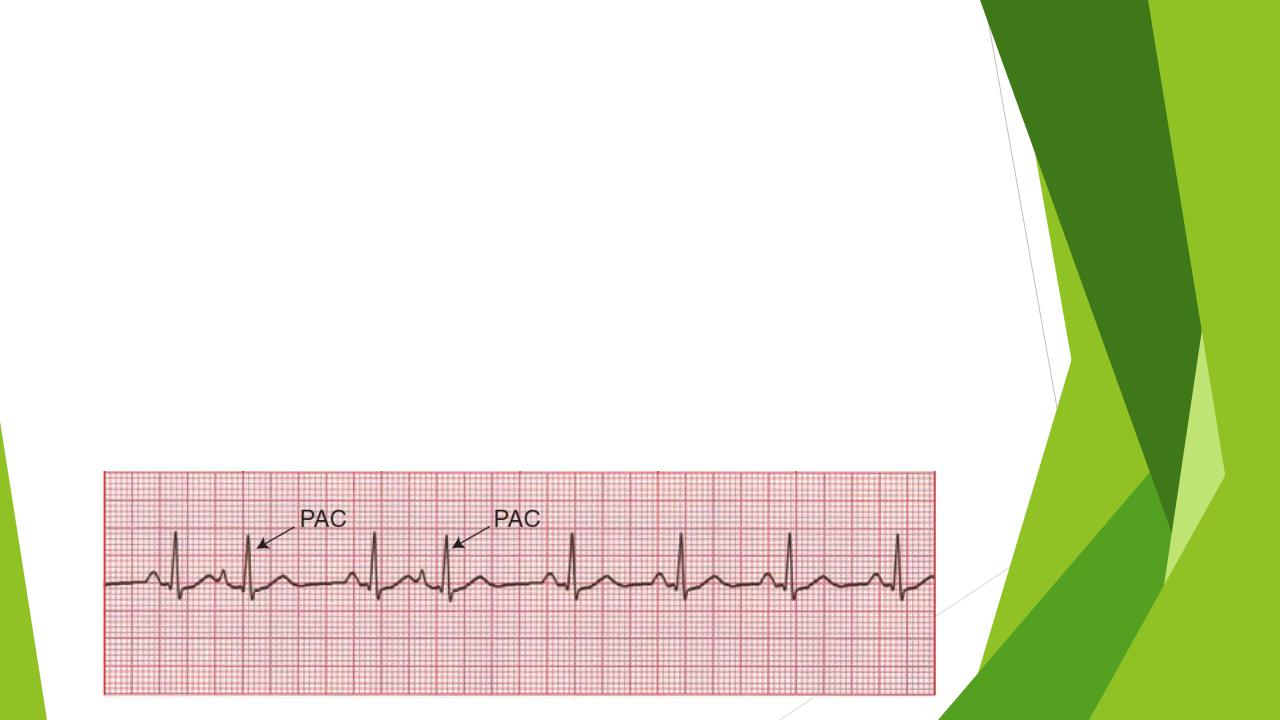
Lesson topic №25. Нарушения ритма (Cardiac arrhythmia in the outpatient setting)
.pdf
Cardiac arrhythmia in the outpatient setting
Gerasimenko I.A. Department of polyclinic therapy with course of general medical practice (family medicine)

Cardiac arrhythmia
A cardiac arrhythmia simply defined is a variation from the normal heart rate and/or rhythm that is not physiologically justified.

Atrial premature beats

Atrial premature beats
Atrial premature beats (APBs), also referred to as atrial or supraventricular extrasystoles, represent premature atrial depolarization occurring earlier than the next expected regular sinoatrial activation, usually from a site outside the sinus node.
Premature depolarizations originating from the atrioventricular node or His bundle are termed atrioventricular junctional premature beats.

Atrial premature beats
In general, APBs occur in adults of any age, with or without structural heart disease.
Increased atrial volume and/or pressure, or increased sympathetic tone are associated with increased frequency of APBs, while in individuals without structural heart disease APBs often originate from the pulmonary veins and may precipitate atrial fibrillation.
Patients with APBs are often asymptomatic, or experience palpitations, dizziness.
Physical examination may reveal pulse irregularity, and surface electrocardiograms (ECGs) usually show premature P waves which differ from the sinus P morphology, followed by a normal, shortened, or prolonged PR interval (depending on the APB site of origin) and narrow QRS complex.
Ambulatory ECG (Holter) monitoring helps to establish the diagnosis when symptoms are sporadic or to quantify the frequency of APBs.

Atrial premature beats
Counselling and reassurance would suffice in most minimally symptomatic or asymptomatic patients with APBs, but any underlying cardiovascular disorder must be treated.
Beta blockers or class III antiarrhythmic drugs (or class IC in patients without significant structural heart disease) can be used to attenuate symptoms or suppress the APBs facilitating other tachyarrhythmias.
Catheter ablation could be considered in selected patients.

Supraventricular tachycardia

Supraventricular tachycardia
The term ‘SVT’ literally indicates tachycardia [atrial rates >100 beats per minute (b.p.m.) at rest], the mechanism of which involves tissue from the His bundle or above.
Traditionally, SVT has been used to describe all kinds of tachycardias apart from ventricular tachycardias (VTs) and AF.

Supraventricular tachycardia: classification
Atrial tachycardias
Sinus tachycardia
•Physiological sinus tachycardia
•Inappropriate sinus tachycardia
•Sinus nodal re-entrant tachycardia
Focal atrial tachycardia
Multifocal atrial tachycardia
Macro−re-entrant atrial tachycardia
•Cavotricuspid isthmus-dependent MRAT
–Typical atrial flutter, counter-clockwise (common) or clockwise (reverse)
–Other cavotricuspid isthmus-dependent MRAT
•Non-cavotricuspid isthmus-dependent MRAT
–RA MRAT
–LA MRAT
Atrial fibrillation

Supraventricular tachycardia: classification
AV junctional tachycardias
Atrioventricular nodal re-entrant tachycardia (AVNRT)
•Typical
•Atypical
Non-re-entrant junctional tachycardia
•JET (junctional ectopic or focal junctional tachycardia)
•Other non-re-entrant variants
Atrioventricular re-entrant tachycardia (AVRT)
•Orthodromic (including PJRT)
•Antidromic (with retrograde conduction through the AVN or, rarely, over another pathway)
